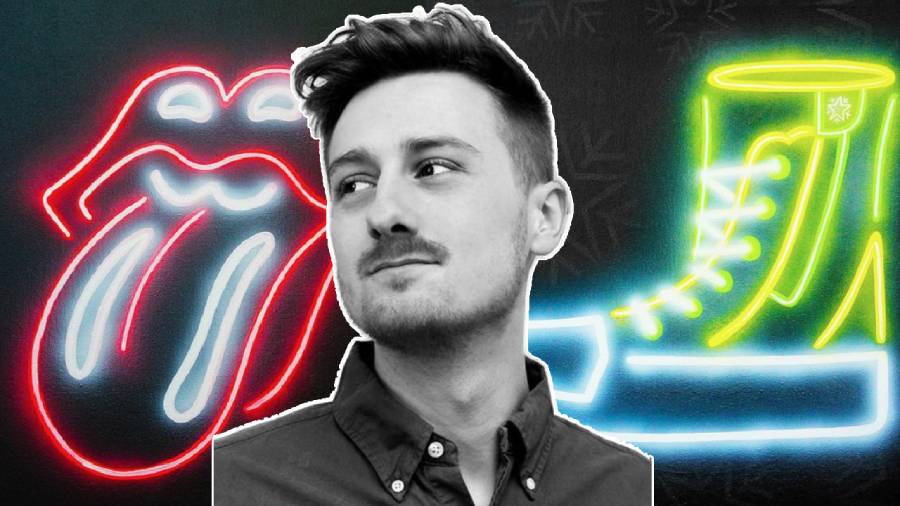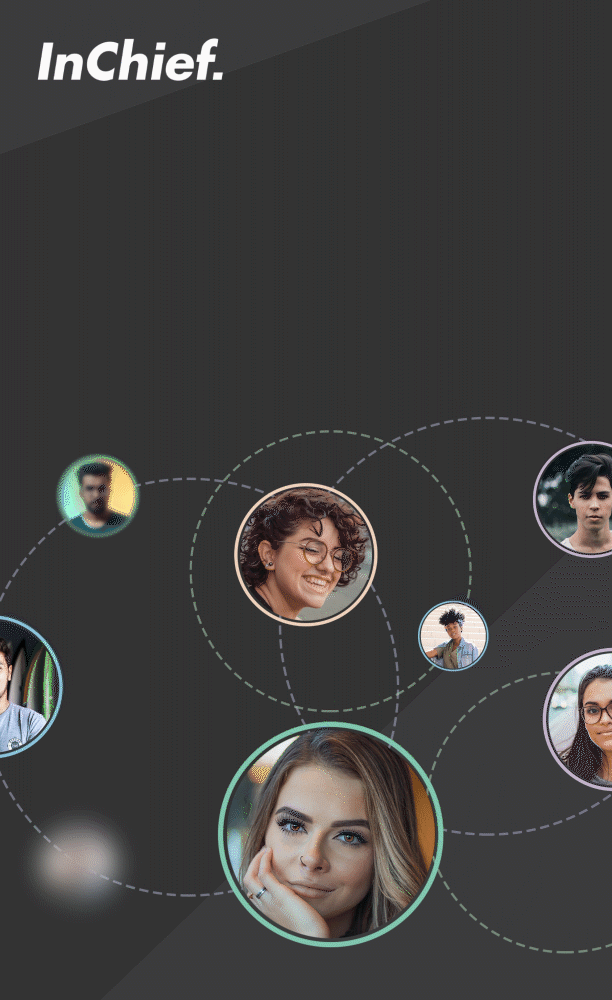Hi James. So, you’re an internet phenomenon these days, but how did it all start? Do you remember when you started thinking social media could work for your art?
It was about 2011 or 2012 when I first started to really look into it. It was amazing, because I didn’t have any graphic design skills back then, but I could jump on a platform like YouTube and search ‘how to design a logo’ and there’d be videos showing me how to do it. Maybe only 10 or 15 videos at that time. But even just from watching those 10 videos, I learned so much that I wouldn’t have learned without social media. That sort of self learning really inspires something within me to create content to showcase my process to share with other people. I think that was like the initial spark. People are out there sharing their processes and helping other people, so I wanted to do the same and sort of pay back what they paid to me so long ago.
So you studied graphic design at university after that?
Yeah, luckily I also managed to find paid graphic design work while I was studying it. I would go on websites like 99 Design where you can get assigned freelance projects, so I put myself forwards for about 100 logo design jobs and pretty much learnt on the job. Then I started to post my designs on Instagram when they were done.
What made you want to post your work on Instagram and not, say, pictures of your friends in the pub?
I’ve never really been a huge fan of social media for ‘self’. When Instagram came around, a lot of people from people who I knew from YouTube were transitioning over to it because at the time it was very much a photo based platform that was ideal for people in the graphic design world.
So how did you work for and experience such amazing growth, then? 1 million followers overnight only happens if you’re Jennifer Aniston.
It was a slow process of putting content out there and seeing what resonated, then trying to learn from each piece of content I put out, and improve with the next piece. I was also trying my best to build community, in the sense that I reached out to people every week told them I loved their work and asked about collaborations, and also talking to people in the comments of great posts.
I then put together a group (with a separate Instagram) called The Ligature Collective, which was a group of 30 lettering artists from around the world. Sharing work of a group of artists helped us grow really quickly, we got to about 250,000 in about a year. After seeing the success of that channel I realised, okay, there’s huge potential on this app. When I started creating content specifically for Instagram, rather than just sharing work that I was already doing, that’s when I saw a huge shift. I started to grow much faster because it was less of my everyday work and more bespoke content I’d made just for the community, which got a lot more engagement.
You have an even bigger audience over on TikTok, when did you start dabbling with that platform?
First of all TikTok didn’t really resonate with me because comparably, my Instagram feed is super curated because I only follow artists on there. Because it’s less curated, it just didn’t really seem like a place where I’d want to spend my time – when I eventually jumped on I wanted to test the waters with it wasn’t something that I took very seriously at all. It was March 2019 when I started to just repost videos from Instagram, but something like the 9th video I posted got about 10 million views, which is INSANE. That’s more than any views I’ve ever had on any other social media platform, maybe even combined. So obviously I saw that there was clearly a huge potential for growth on this platform. After paying more attention and spending more time on the platform I could see the same sort of energy of community creativity and potential on TikTok that I saw when Instagram first started out.
Obviously, since the platform has absolutely exploded there’s still a huge potential for viral videos, but I don’t think it’s as easy now as it was then.
How do you differentiate your content between Instagram and TikTok, then? If you were filming the same piece of art, for example.
So I definitely edit two separate videos for both platforms. On Instagram, the way that I found works best is that I’ll post a carousel where the first visual is a video and the second is an image of the final painting. I think that allows people the best of both worlds where they can enjoy the whole process of the painting or if they just want to check out the final painting they can swipe check it out, leave a like and move on. On TikTok you obviously have your full vertical video format, and the average length is something like 15 to 20 seconds so you’ve got to be much more condensed. TikTok videos are much more fast-paced, and it’s easy to pace them along to popular songs. So the main differences are really the length and the pacing.
@jamesllewis Who Recognises This Character 🤔 #art #illustration #gaming
♬ Dancing in My Room – 347aidan
Do you find there’s a difference in your audiences on each platform?
I feel like if I post the same video on TikTok and Instagram on the same day then neither of them will get great engagement. People seem to be on all the apps and don’t want to see content they’ve just watched somewhere else.
So as well as all the social success you’ve managed to launch your own range of brushes. How did that happen?
It started off when I began to post my work of painting style that I learned that was traditionally inspired by sign painting. It’s a very, very old tradition where sign painters needed to paint both as precisely and as quickly as possible. When I brought that technique into a more modern art space and put it online, people seemed to be mesmerised by the process – and a big part of that is because the brushes that I use are really quite unique. They were particular sign painting brushes and I’d get messages every day asking about them, which I’d reply to as I was trying out different brands to see which worked best for me.
I reached out to a lot of these brush brands to highlight the interest in the artworld, and not one single brand got back to me, which is really surprising because at the time I had over 100,000 followers. But it was a blessing in disguise because that’s when I thought I’d build up my own brand. I used the understanding and the knowledge of the best parts of all of the different brushes that I’ve been using, put that into one product, and then sell that myself.
Firstly I had to reach out to different brush manufacturers, get the specifications made and then send them off to factories, who sent samples back to me which I reviewed, changed, reviewed, changed again. I think we had three rounds of revisions to get the brushes just right and the whole process took around six months to get 1,000 packs of brushes made. Then they all sold out within the first week of launch.
It must have been a little scary putting that initial investment in?
Oh yes! It’s the biggest investment that I’ve ever done, but I absolutely believed that it would work because I completely believed in the product. I use the product and know that it’s great, and also it completely aligns with my audience. It’s not like I’m an artist trying to sell beds or something like that.
For the branded deals that you do get (no beds allowed), how do you figure out how much to charge?
It varies with every project. Sometimes I’ll get a small business reach out to me with a five figure contract, and then get a huge brand like Reebok ask me to do some work for free… so it very much depends on the client.
My number one rule is trying to gauge, through a few emails, where your client’s at, what their goals are, and how you can help them achieve that goal. So if, for example, you have a client who wants to reach 100,000 people in the art niche, I can create a bit of content and put it out to my audience, and then the brand could licence that content and share it on their platform as an advert. That way they can reach people through using my content on their platform and there’s already three revenue streams: you have the creation of the content, you have licencing of the content, and you also have the sharing of the content on your own platform.
Really, though, you have to understand how the client values what you’re doing. It’s a very nuanced thing and of course there are people out there who will design a logo for a fiver. The difference is not how good the work is, it’s how the work will be used by the company. For example, if you’re doing a logo for an airline, you’re not just designing a logo, you’re doing an entire rebrand: they have to reapply that logo onto every bit of every aeroplane, every leaflet and every webpage, and the logo will be seen by hundreds of thousands if not millions of people. Whereas if you know you’re designing a logo for a kebab shop, they’ve probably already got local customers and are just thinking that their logo could do with a bit of a refresh. My best advice is to try to understand your clients and how valuable your work will be to them.
Oh James, you’re so wise.
Follow James on Instagram and TikTok, and check out his brush collection here.







